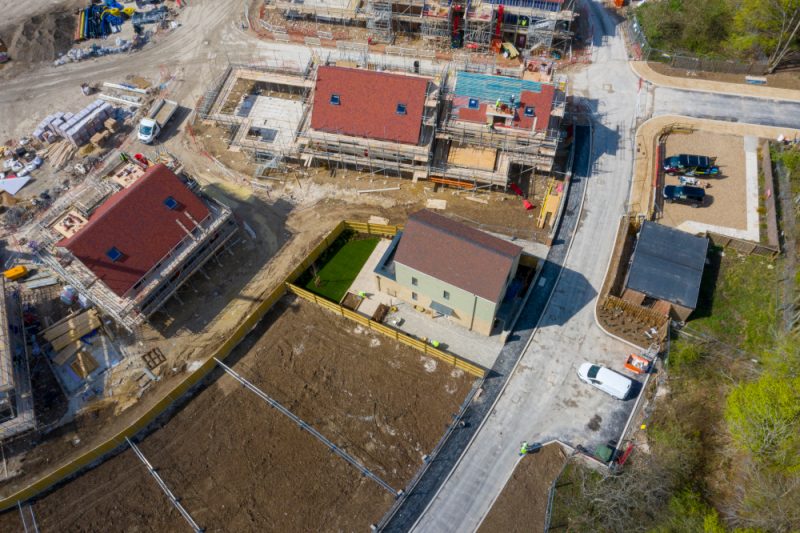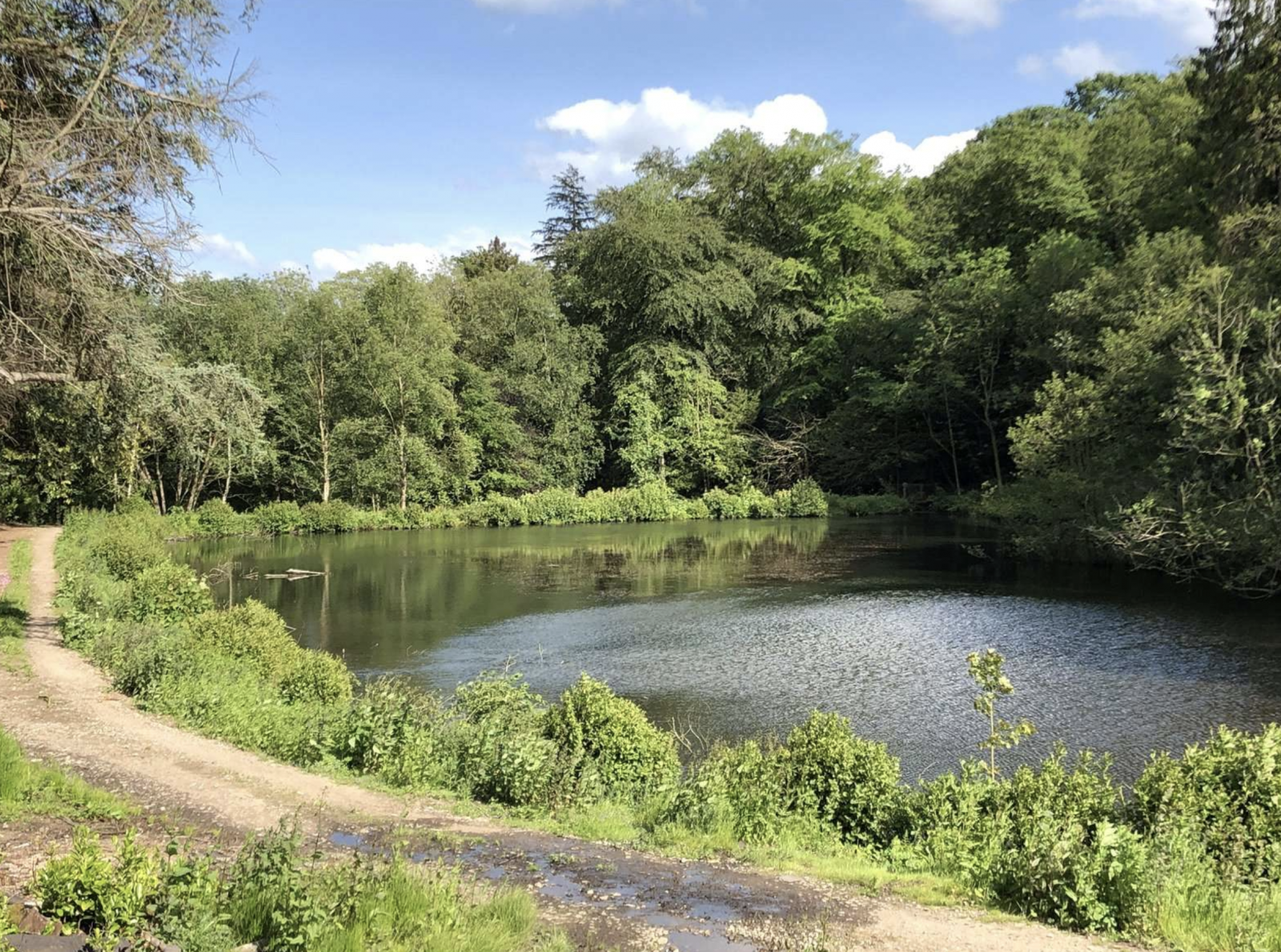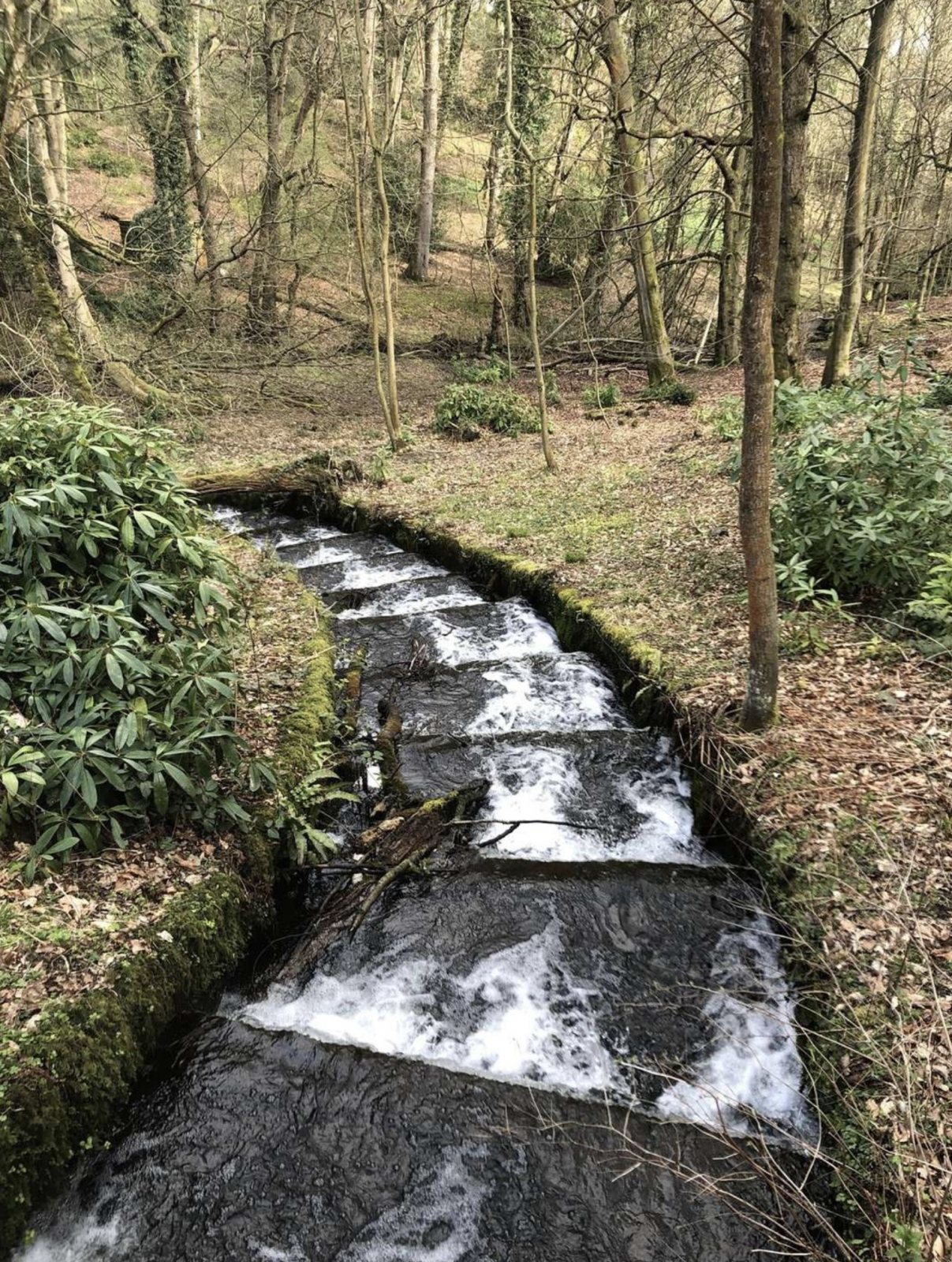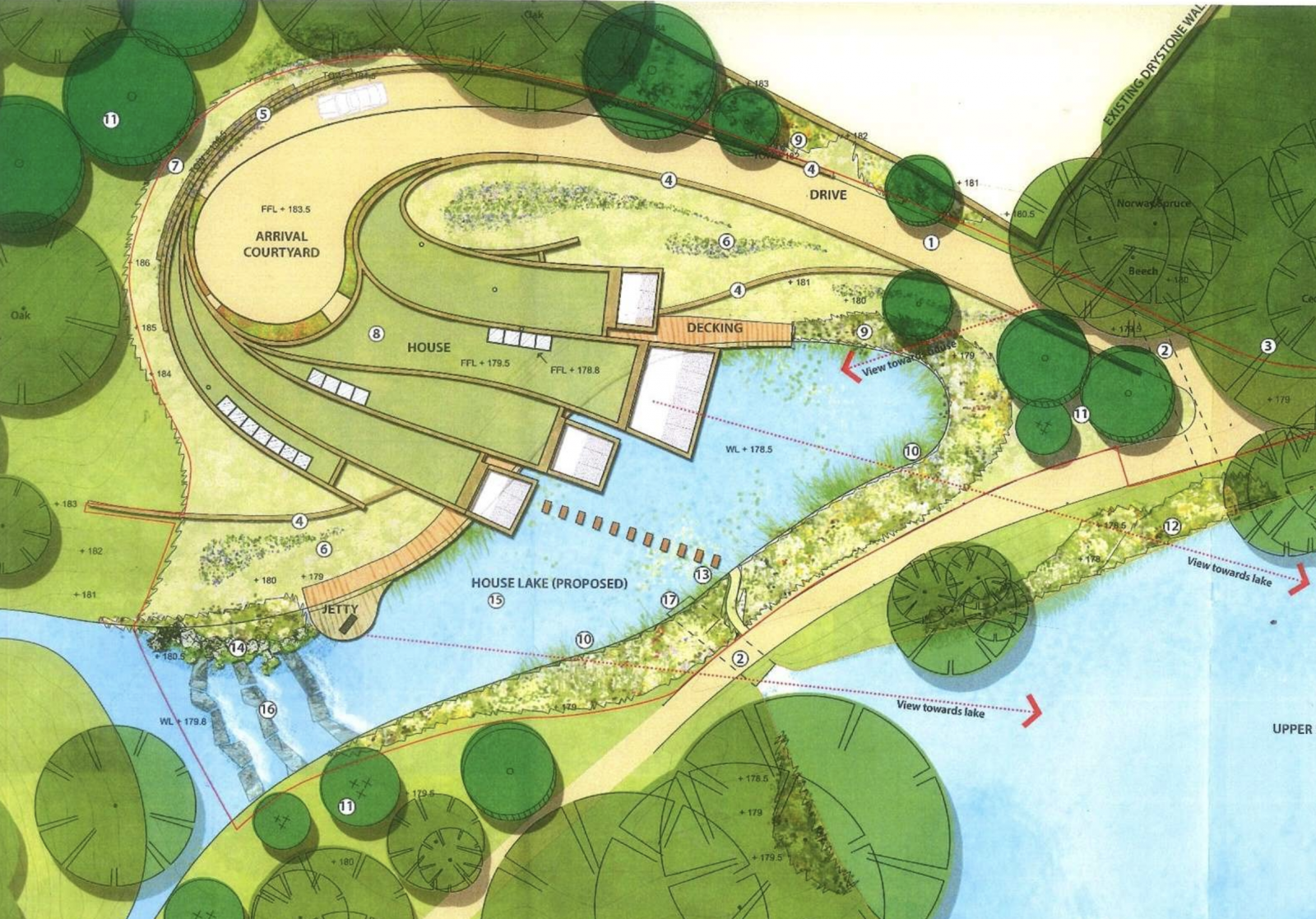While most Custom and Self Build homes are not able to access Help to Buy, Graven Hill, the UK’s largest self and custom build development in Bicester, has enabled its purchasers to access the loan scheme for its Custom Build properties.
Help to Buy is available on all custom build homes at Graven Hill, such as the Eden home, shown, and the event is open to both first-time buyers and existing homeowners. Offering a practical route to making the dream of a tailored home a reality, Help to Buy allows buyers to apply for a 20 percent equity loan from the Government, meaning only a five percent cash deposit is needed, with the remainder covered by a 75 percent mortgage.
Karen Curtin, managing director at Graven Hill, said: “At Graven Hill, we are keen to create a community that is accessible to everyone. Help to Buy is a key part of this, ensuring that all our custom build homes are affordable, even to those taking their first steps onto the property ladder.
“Many people are still unsure of the benefits of the Help to Buy scheme, so this event will provide a brilliant opportunity to talk to industry experts, ask questions and find out everything you need to know about the scheme.
NaCSBA is aware that Help to Buy creates an unfair advantage for speculative house building, and is talking to Government about redressing this balance through the introduction of a Help to Build scheme.
If it were to go ahead, this enable more people to access finance to create their own Self and Custom Build home.
A new Customer Choice Centre has opened at Squirrel Wood, Design Your Home’s large custom build development in Hampshire, on a Homes England site. The centre includes a range of products, design solutions and options for people to choose from, giving them first hand experience of the choices on offer for their Custom and Self Build homes – a first for the UK. Customers can choose from a range of doors, skirtings, kitchens and bathrooms, as well as external cladding and bricks choices.
Situated just 10 minutes from Basingstoke, Phase 2 of Squirrel Wood is now on the market, offering Self Build, Custom Build or ‘Custom Choice’ opportunities, marketed through Custom Build Homes.
Starting from £260,000 for a Custom Build and £350,000 for a Custom Choice, the plots are part of the larger 122-plot site, where all planning is agreed in advance with Basingstoke Council for the range of design options on offer. This is pre-approval contributes to faster delivery, especially in comparison to going through the planning process individually, meaning homes can be delivered in a six month timeframe.
With its range of approaches, Squirrel Wood offers a vision for how customised homes can be delivered in the future, with customers have a series of choices to reflect their needs and circumstances, allowing them to balance choice with knowledge, time and budget.
Custom Build: At Squirrel Wood the Custom Build option gets you a fully-serviced plot with the choice of an internal layout from a wide range of pre-approved options. Once the plot is purchased customers enter into a contract with Design Your Home to build the property.
Using the Customer Choice Centre customers can select their internal and external preferences, giving them a truly personalised build, without the need for any construction knowledge.
Custom Choice: With the Custom Choice option the structure of the property is constructed prior to marketing, and customers have freedom to tailor the interiors. Unlike the Custom Build route, you pay for the property on completion, meaning you can choose a regular new build mortgage, or access the Help to Buy scheme. Custom-choice homes at Squirrel Wood can be completed within just four months.
Self Build: There are also a select number of Self Build plots on offer, with a Design Code establishing the rules around what is allowed in build terms.

New homes under construction at Squirrel Wood, with serviced plots laid out
For the custom options, there’s a range of house types to choose from, including 2-3 bed and 3-4 bed options, with further choices available depending on the plot type and route you choose.
Type A House: a 2-3 bedroom, terraced Custom Build home, with the option of a closed- or open-plan ground floor. Upstairs the space can be configured as two large bedrooms or three bedrooms with space for a study.
Type B House: a 2-3 bedroom, terraced Custom Build home with either a closed- or open-plan ground floor. Customers can have two large bedrooms, or three beds with an en-suite.
Type D Self Build Plot Only: a building plot with permission to build a detached 4 bedroom home. The Design Code sets the parameters of your design and, providing you satisfy these criteria, then you don’t need further planning consent.
Type F House: a 3-4 bedroom detached Custom Build or Choice home, with the choice of the kitchen at the front or the rear, and the option of an extra room with an extension. Again you can choose a two or three bed option upstairs.
The first custom homes on the site are now in their build phase, with first completions expected in the new year.
Kim Slowe, managing director of designyourhome.com said,“For far too long purchasers of new build homes in the UK have been given very little or no choice on both the layout and fitting out of their home. This makes little sense given that a home is likely to be the biggest purchase that an individual will ever make. designyourhome.com changes that. It gives homebuyers real choices whilst keeping the purchase and build process very simple. designyourhome.com has been designed to put the consumer in control for the very first time.”
Squirrel Wood is one of the Government’s original pilot scheme for innovative new Custom and Self Build housing, as set up by Homes England. The Homes England development is on the site of the Park Prewett hospital, with Design Your Home set up to bring Custom Build housing into the mainstream, as part of the vision of Places for People, the company behind it.
New tech platform MyPlot has launched in the Self Build market, aiming to make the process of building as simple as possible by bringing together a range of services to assist novice builders on a single platform.
While self-build is on the ‘bucket list’ for many, it has yet to become a mainstream housing solution in the UK. For some would-be self builders, the process can appear complex especially for those with a full-time job and family obligations, or without any construction know-how.
While finding a plot remains a significant barrier for some, for others navigating the complex planning system, sourcing trusted contractors or securing finance for the project can be key challenges. For those without a property background these obstacles can feel insurmountable, and many will return to the established homes market, which leaves their self-build ambitions unfulfilled.
To help remedy this, MyPlot has been created to assist aspirational self-builders with the process. Users can find their ideal plot, and source contractors from the directory on the platform to interview and appoint the entire team to take their home from concept to reality.
From planning consultants, architects, building contractors and mortgage advisors, the experts listed, are all experienced in delivering self-build projects, and are carefully selected by MyPlot to give novice self-builders the confidence in their choices.
The company aims to grow the number of self-build homes in the UK from under 10% of new housing in the UK, which currently creates around 12,000 homes per year. In contrast, The Self Build Housing Market Report Analysis 2016-2020 revealed self-build rates in Austria, Belgium, Italy and Sweden are as high as 70 per cent.
NaCSBA research indicates that in the first seven months of the Right-to-Build registers opening, 18,000 people had signed up, jumping to 40,000 by December 2018, so demand is definitely there.
MyPlot Director, Paul Smith, said: “In Europe, it’s much more straightforward to source a plot of land, and the planning system is less onerous – there’s also more support for those embarking on the process.
“With MyPlot, we’ve looked at the issues and offered a solution, filling the gaps and removing the complexity by providing a directory of self-build experts on a single platform.
“The government has been very supportive of self-build, particularly in recent years, introducing policies to oil the wheels and make it more attractive financially, but it’s often the practical considerations that put people off, such as financing the project and living arrangements during the build.
“What’s more, the assumption that self-build is something only wealthy people do has to be challenged – we hope that MyPlot helps to encourage people to at least be open to the idea, rather than dismiss it out-of-hand.”
Credit: Flo Pappert on Unsplash
Anyone with deep pockets in Yorkshire should check out the exceptionally rare opportunity to buy this unusual rural Self Build plot, with planning permission provided under Paragraph 79 (previously Paragraph 55) of the National Planning Policy Framework (NPPF) for a 456.15 sqm home. You can buy the whole site, or just the plot, and the price is a snip at £1,100,000 for the 22.74 Ha combined site!

The plot is set in its own private woodland estate setting, Eagle Hall Woods, in Pateley Bridge, Harrogate, planning permission was achieved with support from Rural Solutions planning consultancy. . The site is an unusual Victorian-designed pleasure ground filled with rare and mature tree specimens together with lakes, ponds and ornate cascades, providing a striking backdrop for the potential home.
Planning was granted by Harrogate Borough Council on 8 July 2016 for the erection of a single dwelling, together with associated access, and additional works, including an on-site sewage processing facility for the property, subject to a Section 106 Agreement.
The 22.74 Ha estate is for sale as a single item or available in two lots, with the second lot providing nearly 2 hectares of meadow and pasture land.

Paragraph 79 of the NPPF allows for a new, isolated home in the countryside – on the proviso that the new home is architecturally “interesting”. Known as Paragraph 55 in the previous version of the NPPF, Para 79 offers an exemption to the exclusion of building in the Green Belt, but the permissions are notoriously difficult to obtain. What’s more, the very nature of the homes needing to be exceptional or innovative normally means that they are, by default, expensive homes in the very finest tradition of Grand Designs.
The NPPF defines exceptional quality:
– is truly outstanding or innovative, reflecting the highest standards in architecture, and would help to raise standards of design more generally in rural areas; and – would significantly enhance its immediate setting, and be sensitive to the defining characteristics of the local area.

The planning permission allows for the creation of a truly unique home with innovative design and significant architectural merit. In conjunction with the seller, Sadler Brown Architecture designed a contemporary design for a five-bedroom home with accommodation over two floors. Spacious balconies make the most of the new small lake, a planning condition, and the design features local stone and a green roof paired zinc cladding.
With planning permission granted in 2016, the councils has received a letter of confirmation in April 2019 confirming some material operation has begun and that condition has been complied with, securing the permission.
Eagle Hall Woods is being marketed by Savills, York, and is for sale freehold, subject to a sporting licence with potential to exercise a break clause.
Tenure and Lotting:
Lot 1 approximately 36.8 acres – £1,000,000.
Lot 2 Approximately 19.4 acres – £100,000.
Check out the full details on council planning portal reference number 15/03345/FUL
Images: Savills; Sadler Brown Architects
Eden District Council, in partnership with Andy Lloyd of the National Community Land Trust Network, is running a free self-build, custom-build and community-led housing event in Penrith on 4 July. With exhibitors and presentations, the event is ideal for any prospective custom, self and community builders wanting to get help or advice, find like-minded people or take the next step on their ambition to create their own home.
Kicking off at 6pm at the Rheged Centre, there’s an hour allocated for networking and talking to exhibitors, with presentations starting at 7pm.
TV presenter and architectural technician Charlie Luxton will be sharing his enthusiastic personal experiences of self building, before a range of presentations that will help you discover more about building as part of a community, planning, finance and more.
Exhibitors and advice*:
• Andy Lloyd, National Community Land Trust Network Technical Advisor
• ACT Cumbria and Lancaster Community-led Housing Hub
• Atkinson Building Contractors
• 2030 Architects
• JIW Properties
• LoCal Homes
• Penrith Building Society
• Thomas Armstrong – kit systems
• Ecomotive
• Unity Trust Bank
• Hyde Harrington
• Manning Elliott
• PFK
• Green Footsteps
• Ecological Building Systems
• Eden District Council – Officers from Planning, Building Control and Community-led Housing
And presentations from:
• Charlie Luxton, architectural designer, writer and TV presenter
• ACT Cumbria and Lancaster Community-led Housing Hub
• Patterdale Community Land Trust / Eden Housing Association partnership
• Lancaster Forgebank Co-housing
• Ecomotive, a social enterprise supporting group projects with an emphasis on sustainability and affordability
• Rod Hughes from 2030 Architects
• Rob Jerams from LoCaL Homes, a not-for-profit advanced housing manufacturer, offering high performance, low carbon housing solutions
• Bruce Armstrong-Payne, local self-builder and Planning Consultant
• Michelle Stevens from Penrith Building Society.
*Subject to change
While the event is free, places are limited so registration is a must.
Andy Lloyd is a community housing adviser to the National Community Land Trust Network. He provides technical support to communities and local authorities in the Penrith area, helping to deliver community owned affordable housing projects, such as:
• Lyvennet Community Trust in Crosby Ravensworth
• Keswick Community Housing Trust
• Lune Valley Community Land Trust in Halton, Lancashire
Community-led housing includes self-build, co-housing, co-operative housing, self-help housing and community land trusts (CLTs). This housing enables communities to become active players in their own sustainable development.
Sign up to Eden District Council’s Self and Custom Build Register.
EXHIBIT: If your company provides goods and services which may be of interest to self-builders and would like to exhibit at the event please email: andy@communityhousingprojectdevelopment.uk
Find out more about Build your Home, Build your Community event here.
North East Derbyshire District Council and Bolsover District Council, both NaCSBA members, are hosting a FREE Custom and Self Build event to promote the sector and share learnings with members of the public. The councils are encouraging anyone wishing to Self Build or Custom Build to register for the event and come along to this free informative event.
The councils are organising the event to publicise the route, and also their activities locally to make Custom and Self Build a choice for more people, supporting people as they go through the joys and pitfalls of building your own home.
At the event will be presentations about planning, design from Lomas and Mitchell Architects, low energy housing, finance by BuildStore, land and legal issues. Plus, there are question and answer sessions giving people the opportunity to chat about your own projects.
In addition, there will be handouts and advice from the companies present and the opportunity to network with other like minded delegates who are interested in seeing their dream home designed and constructed.
Date: Wed, 12 June 2019
Time: 9:30-4pm
Location: The Tangent Business Hub, Weighbridge Road, Shirebrook, NG20 8RX

Self and Custom Builders building in Scotland have a new resource in the recently launched Scotland Self and Custom Build Portal. Like NaCSBA’s Self Build Portal, the site provides advice, guidance and support for anyone wanting to build in Scotland.
The Portal was created thanks to the Self and Custom Build Housing Pilot Challenge Fund, which was launched by Scottish Government to test new models for growing the sector north of the border. Specifically, the Challenge Fund aimed to support new routes and models for anyone wanting to Self Build in Scotland, including alternative finance options, which would also create more opportunities for the companies servicing the sector, such as small building firms.
The Highlands Small Communities Housing Trust (HSCHT) submitted an application for the Challenge Fund with its idea of creating a new dedicated portal for Scotland, to offer support and advice around the Scottish context for Custom and Self Builders. The HSCHT have previously supported a range of Self Build projects and created new finance models to make Self Build more accessible.
Like NaCSBA’s Self Build Portal, the Scottish portal offers support and advice tailored to Scotland’s devolved laws, giving insight into the local situation, including legislation, finance and Scottish plots. An interactive ‘Getting Started’ tool also gives would-be-builders a ready reckoner of costs depending on the amount of work they’re prepared to do themselves.
Its plot service offers a route to land for anyone looking to build, as well as a service for landowners to advertise their land in Scotland.